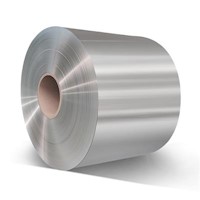| Items |

2024-T3A-016-144
Aluminum Sheet - Series 2024-T3 Alclad
|

2024-T3A-020-144
Aluminum Sheet - Series 2024-T3 Alclad
|

2024-T3A-025-144
Aluminum Sheet - Series 2024-T3 Alclad
|

2024-T3A-032-144
Aluminum Sheet - Series 2024-T3 Alclad
|

2024-T3A-040-144
Aluminum Sheet - Series 2024-T3 Alclad
|
|
Material
|
N/A
Aluminum
|
|
Shapeform
|
N/A
Sheets
|
|
Series
|
N/A
2024-T3 ALCLAD
|
|
Grade
|
N/A
2024
|
|
Preparation
|
N/A
Interleaved and Stenciled
|
|
Temper
|
N/A
T3 AlClad
|
|
Thickness
|
N/A
0.016 inches0.4064 mm
|
N/A
0.02 inches0.508 mm
|
N/A
0.025 inches0.6350 mm
|
N/A
0.032 inches0.8128 mm
|
N/A
0.040 inches1.016 mm
|
|
Size
|
N/A
48 x 144
|
|
Width
|
N/A
48
|
|
Length
|
N/A
144
|
|
Sheet Weight per Unit Area
|
N/A
0.230 lbs/ft²1.12286 kg/m²
|
N/A
0.288 lbs/ft²1.406016 kg/m²
|
N/A
0.360 lbs/ft²1.75752 kg/m²
|
N/A
0.461 lbs/ft²2.250602 kg/m²
|
N/A
0.576 lbs/ft²2.812032 kg/m²
|
|
Weight per Sheet
|
N/A
11.06 lbs5.017 kg
|
N/A
13.82 lbs6.269 kg
|
N/A
17.28 lbs7.838 kg
|
N/A
22.12 lbs10.033 kg
|
N/A
27.65 lbs12.542 kg
|
|
ASTM Specification
|
N/A
AMS 4041 AMS-QQ-A-250/5 ASTM B209
|
|
Ultimate Strength
|
N/A
65 ksi
|
|
Yield Strength
|
N/A
45 ksi
|
|
Elongation percent in 2 inches
|
N/A
18
|
|
Ultimate Shearing Strength
|
N/A
18 ksi
|
|
Modulus of Elasticity1
|
N/A
10.6 x 106 ksi
|
|
Resistance to Corrosion - General2
|
N/A
D
|
|
Stress Corrosion Cracking3
|
N/A
C
|
|
Workability (Cold)4
|
N/A
C
|
|
Mechinability
|
N/A
B
|
|
Brazeability5
|
N/A
D
|
|
Gas Weldability6
|
N/A
C
|
|
Arc Weldability7
|
N/A
B
|
|
Resistance Spot and Seam Weldability8
|
N/A
B
|
|
Applications
|
N/A
Truck wheels, screw machine products, aircraft structures
|
|
Density
|
N/A
0.100 lbs/in³
|
|
Specific Gravity
|
N/A
2.78
|


